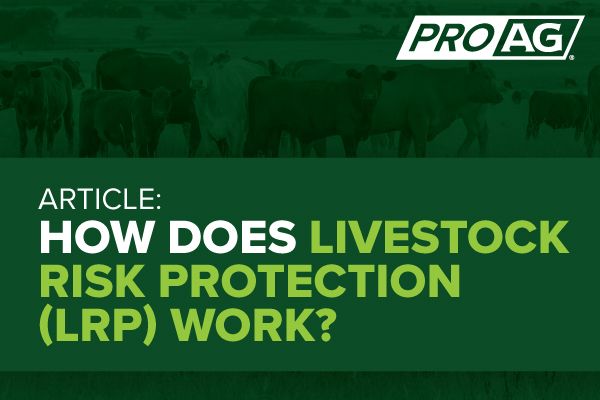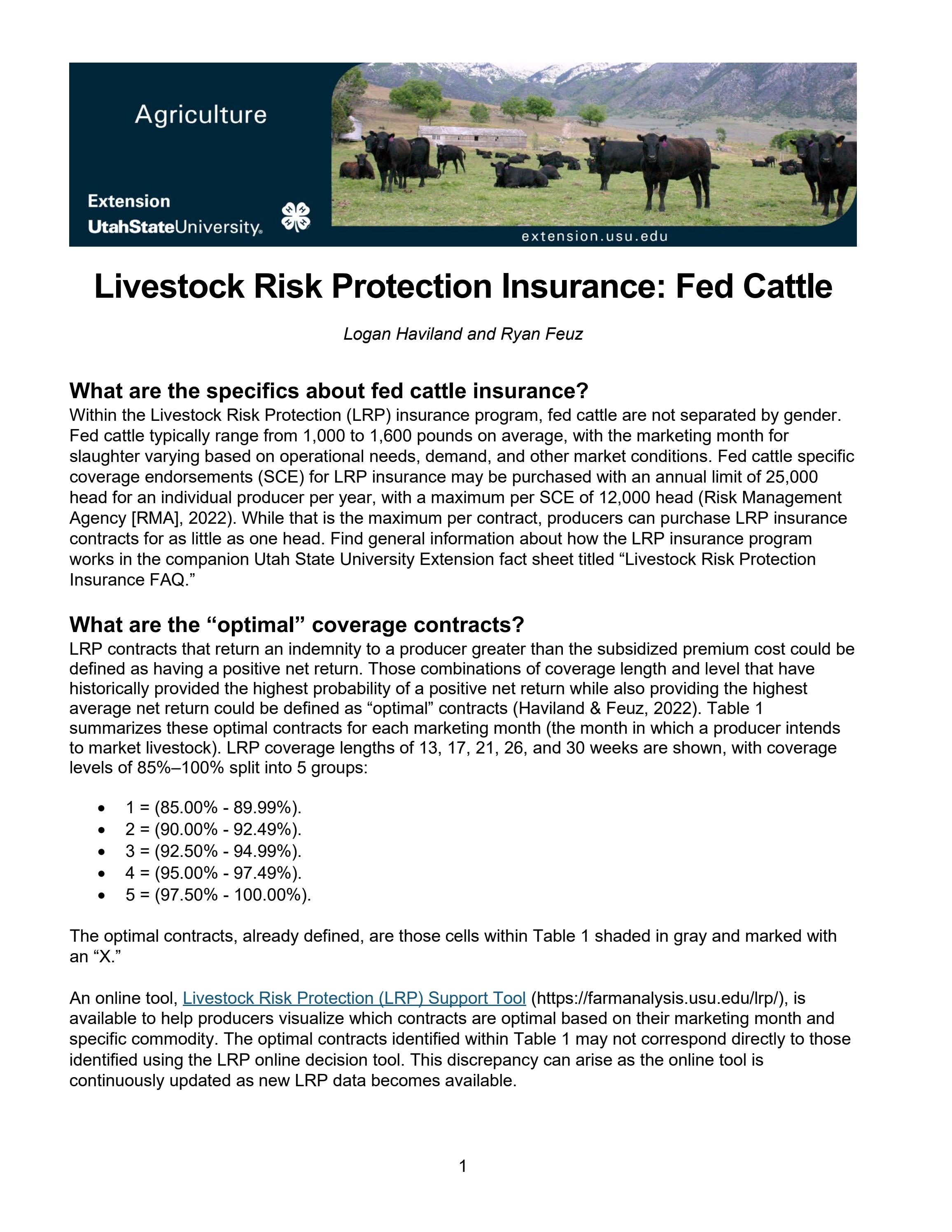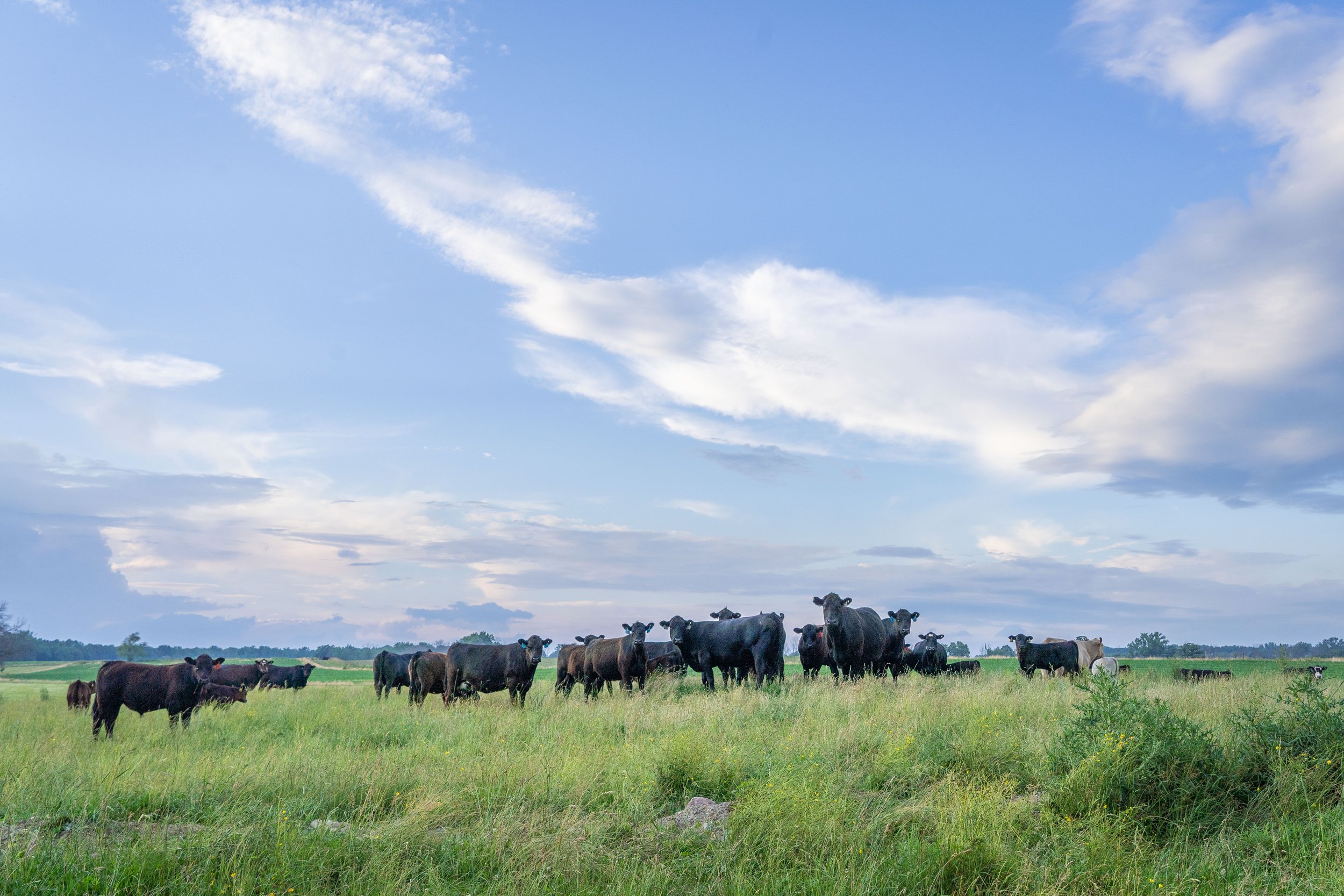Safeguarding Success: Bagley Risk Management Solutions
Wiki Article
Understanding Livestock Threat Defense (LRP) Insurance Coverage: A Comprehensive Overview
Navigating the realm of livestock danger protection (LRP) insurance can be a complicated endeavor for several in the agricultural market. This kind of insurance policy provides a safety and security net versus market changes and unexpected circumstances that might affect animals manufacturers. By recognizing the details of LRP insurance coverage, producers can make informed decisions that may protect their procedures from economic risks. From just how LRP insurance policy functions to the different coverage options readily available, there is much to discover in this extensive overview that might potentially form the means livestock manufacturers come close to risk management in their services.

Just How LRP Insurance Policy Works
Sometimes, recognizing the auto mechanics of Animals Risk Security (LRP) insurance can be complex, however breaking down just how it works can supply clarity for farmers and ranchers. LRP insurance policy is a danger administration device developed to safeguard animals manufacturers versus unexpected cost declines. The policy allows manufacturers to set a protection level based upon their details demands, choosing the number of head, weight variety, and insurance coverage rate. When the policy remains in place, if market costs fall listed below the coverage price, producers can file a claim for the difference. It's important to note that LRP insurance is not a revenue warranty; instead, it concentrates entirely on rate danger defense. The insurance coverage period usually varies from 13 to 52 weeks, giving adaptability for manufacturers to select a period that straightens with their production cycle. By using LRP insurance coverage, breeders and farmers can alleviate the monetary threats linked with changing market rates, ensuring better security in their operations.Eligibility and Insurance Coverage Options

When it involves coverage choices, LRP insurance offers manufacturers the adaptability to choose the coverage degree, coverage period, and endorsements that finest fit their threat management requirements. Insurance coverage degrees typically vary from 70% to 100% of the anticipated ending value of the insured animals. Producers can also select protection periods that line up with their production cycle, whether they are insuring feeder cattle, fed livestock, swine, or lamb. Endorsements such as price threat protection can additionally customize protection to secure against adverse market fluctuations. By recognizing the qualification requirements and coverage alternatives offered, animals manufacturers can make enlightened decisions to manage risk efficiently.
Benefits And Drawbacks of LRP Insurance Policy
When assessing Animals Danger Security (LRP) insurance coverage, it is crucial for animals manufacturers to consider the drawbacks and advantages integral in this threat management tool.
One of the primary benefits of LRP insurance is its ability my website to provide security versus a decline in livestock costs. Additionally, LRP insurance policy supplies a degree of versatility, allowing producers to personalize coverage degrees and plan durations to fit their particular requirements.
Nevertheless, there are likewise some drawbacks to think about. One limitation of LRP insurance coverage is that it does not shield versus all kinds of threats, such as condition outbreaks or natural calamities. Additionally, costs can sometimes be expensive, particularly for manufacturers with big animals herds. It is vital for manufacturers to thoroughly examine their individual threat direct exposure and financial scenario to determine if LRP insurance coverage is the appropriate risk monitoring tool for their operation.
Recognizing LRP Insurance Policy Premiums

Tips for Taking Full Advantage Of LRP Conveniences
Taking full advantage of the benefits of Animals Danger Protection (LRP) insurance policy requires calculated planning and proactive danger administration - Bagley Risk Management. To take advantage of your LRP coverage, consider the complying with ideas:Regularly Evaluate Market Conditions: Keep notified concerning market fads and price variations in the animals sector. By checking these aspects, you can make educated choices concerning when to acquire LRP protection to protect versus possible losses.
Set Realistic Insurance Coverage Levels: When choosing insurance coverage levels, consider your production prices, market price of animals, and prospective dangers - Bagley Risk Management. Establishing realistic coverage levels makes sure that you are effectively protected without overpaying for unnecessary insurance coverage
Diversify Your Protection: Instead of relying entirely on LRP insurance, think about diversifying your risk monitoring techniques. Combining LRP with other threat administration tools such as futures contracts or choices can supply thorough insurance coverage against market uncertainties.
Testimonial view website and Readjust Protection Consistently: As market problems change, periodically assess your LRP protection to ensure it aligns with your existing threat direct exposure. Adjusting protection levels and timing of purchases can help enhance your danger defense technique. By complying with these tips, you can make best use of the advantages of LRP insurance coverage and safeguard your animals operation versus unforeseen threats.
Conclusion
To conclude, livestock threat security (LRP) insurance is a beneficial tool for farmers to take care of the financial threats associated with their animals operations. By recognizing how LRP functions, eligibility and insurance coverage choices, along with the advantages and disadvantages of this insurance coverage, farmers can make informed choices to shield their resources. By carefully considering LRP costs and applying methods to take full advantage of advantages, farmers can minimize potential losses and ensure the sustainability of their procedures.
Livestock manufacturers interested in acquiring Livestock Risk Security (LRP) insurance policy can check out a range of qualification requirements and coverage alternatives customized to their specific livestock operations.When it comes to protection alternatives, LRP insurance policy uses producers the flexibility to select the insurance coverage degree, insurance coverage duration, and recommendations that finest match their danger administration requirements.To comprehend the intricacies of Animals Threat Defense (LRP) insurance fully, understanding the elements influencing LRP insurance coverage costs is critical. LRP insurance coverage costs are determined by numerous elements, consisting of the insurance coverage level selected, the expected price of livestock at the end of the coverage duration, the kind of livestock being insured, and the size of the insurance coverage duration.Review and Readjust Insurance Coverage Routinely: As market problems alter, regularly evaluate your LRP coverage to guarantee it lines up with your existing danger direct exposure.
Report this wiki page